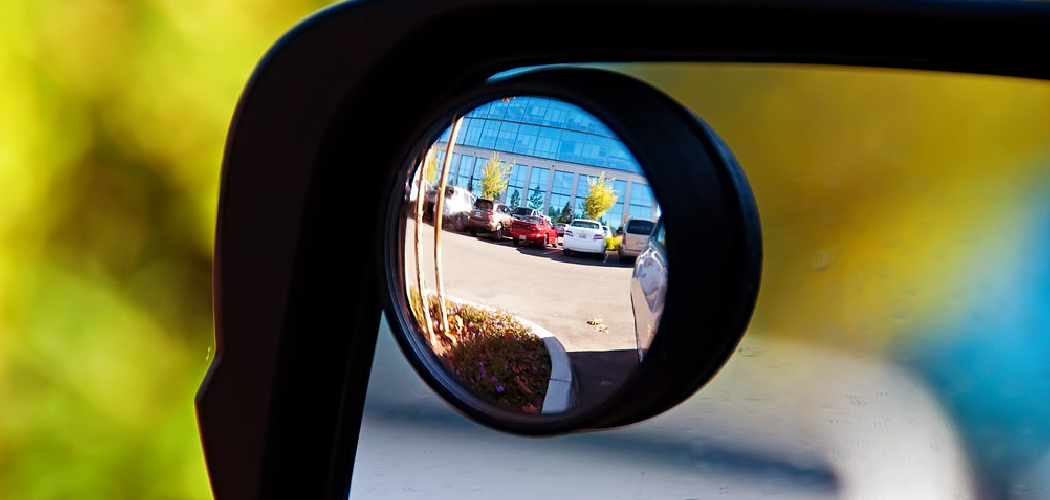Are you tired of having to turn your head while driving constantly?
Blind spot mirrors are a simple yet effective tool that enhances a driver’s field of vision, minimizing the risk of accidents caused by unseen vehicles in adjacent lanes. These small, convex mirrors are typically attached to the side mirrors of a car and are designed to provide a wider angle of view, making it easier to detect objects or cars that may not appear in the standard mirrors.
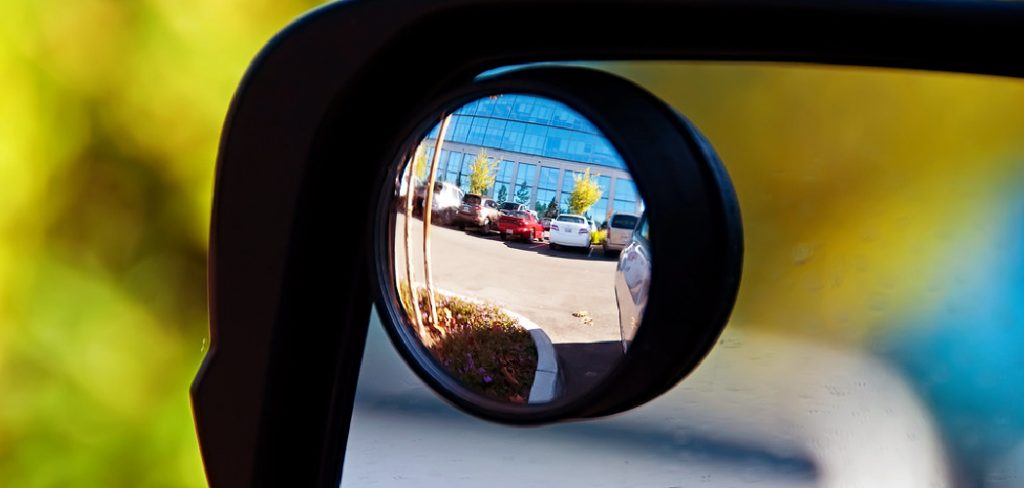
Properly using blind spot mirrors can improve road safety by helping drivers make more informed decisions when changing lanes, merging, or maneuvering in traffic.
This guide on how to use blind spot mirrors will walk you through the steps to correctly position and utilize blind spot mirrors for optimal visibility and safety.
What Are the Benefits of Using Blind Spot Mirrors?
Using blind spot mirrors can provide several benefits for drivers, including:
- Improved Visibility: As mentioned earlier, blind spot mirrors offer a wider angle of view, allowing drivers to see objects or vehicles that may not be visible in the standard side mirrors.
- Reduced Blind Spots: The primary purpose of a blind spot mirror is to eliminate or minimize blind spots, which are areas around your vehicle that cannot be seen through the rearview or side mirrors. By adding a blind spot mirror, you increase your field of vision and minimize the risk of accidents caused by unseen objects or cars.
- Increased Safety: A blind spot mirror can greatly increase your vehicle’s safety. It improves visibility and reduces blind spots, which is especially important when changing lanes on a busy highway or maneuvering through tight spaces.
- Easy Installation: Blind spot mirrors are easy to install and require no special tools or skills. They usually come with adhesive backing, allowing quick and secure attachment to your side mirrors. Some models also offer adjustable swivel mounts, allowing you to customize the angle of your blind spot mirror for optimal visibility.
What Will You Need?
Before installing your blind spot mirrors, you will need the following:
- Your chosen set of blind spot mirrors
- A clean cloth or towel
- Rubbing alcohol (optional)
- Adhesive promoter (optional)
- Gloves (optional)
Once you have gathered all the necessary materials, you can proceed with the installation process.
8 Easy Steps on How to Use Blind Spot Mirrors
Step 1: Clean the Side Mirrors
Start by thoroughly cleaning the surface of your side mirrors to ensure proper adhesion of the blind spot mirrors. Use a clean cloth or towel to remove dirt, dust, and debris. For a more effective clean, consider applying a small amount of rubbing alcohol to the cloth to remove any grease or residue. Ensure the surface is arid before moving on to the next step.

Step 2: Choose the Placement
Decide where to position the blind spot mirrors on your side mirrors. Typically, the best placement is in the upper outer corner or lower outer corner of the side mirrors, as this maximizes visibility of the blind spot without obstructing your primary view. Sit in the driver’s seat and adjust the side mirrors to your normal driving position to confirm the placement. Ensure the chosen position allows a clear view of the blind spot while keeping the rest of the mirror functional.
Step 3: Test the Position
To test the position of your blind spot mirrors, start by sitting in the driver’s seat and ensuring your side mirrors are set to your preferred driving angle. Then, observe how the blind spot mirrors perform as you check for objects or vehicles in your blind spot. Conduct this test in a safe and controlled environment, such as an empty parking lot.
Slowly drive and monitor how well the mirrors cover the previously hidden areas. If you identify any blind spots or notice that the mirrors are not providing adequate visibility, adjust their position slightly and re-test. Repeat this process until you achieve maximum coverage and confidence in your mirror setup.
Step 4: Apply the Blind Spot Mirror
Begin by selecting the appropriate location to attach the blind spot mirror. Typically, these mirrors are affixed to the outer edge or lower corner of your side mirrors, depending on your specific vehicle and personal preference. Clean the surface of the side mirror using a glass cleaner and a lint-free cloth to ensure proper adhesion.
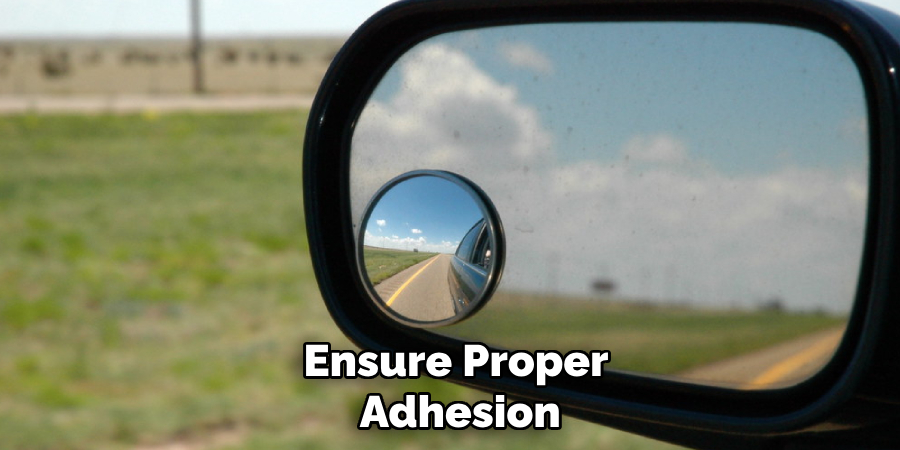
Once the surface is dry, carefully peel off the adhesive backing on the blind spot mirror. Position the mirror in the desired location and press firmly to secure it in place.
Step 5: Adjust the Angle
Once your blind spot mirrors are installed, it’s essential to use them effectively to enhance your driving safety. These mirrors are designed to provide a wider field of vision, helping you see areas that traditional side mirrors may miss. Regularly glance at the blind spot mirrors while driving to monitor adjacent lanes, especially before changing lanes or merging into traffic.
However, do not rely solely on the blind spot mirrors—always perform a quick shoulder check to ensure no vehicles are in your blind spot. With practice, blind spot mirrors can become an invaluable tool for safer and more confident driving.
Step 6: Test While Driving
While driving, take the time to get accustomed to the positioning and visibility of your blind spot mirrors. Practice using them in various driving scenarios, such as highway merging, lane changes, and navigating congested areas. Pay attention to how they complement your regular side mirrors and rearview mirror, improving your overall awareness of surrounding traffic.
Adjust as needed to ensure maximum functionality and visibility. Remember, testing while driving will help you build confidence and make the most out of your blind spot mirrors for enhanced safety.
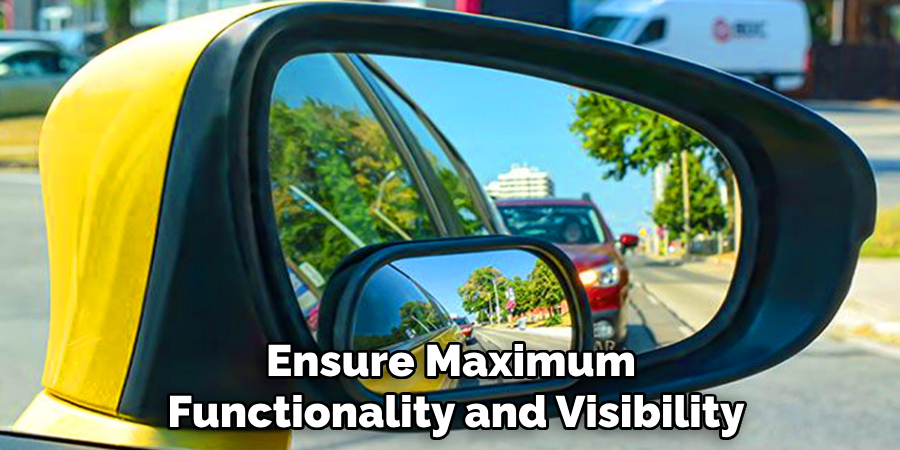
Step 7: Monitor Regularly
Regularly check and clean your blind spot mirrors to ensure they remain clear and free of obstructions. Dust, dirt, or water spots can reduce visibility and hinder their effectiveness. Make it a habit to inspect their position periodically, as vibrations from driving may cause slight movements over time. Ensure they are securely attached and properly aligned with your primary mirrors. Taking these steps will help maintain optimal performance and contribute to a safer driving experience.
Step 8: Adjust as Necessary
After setting up your blind spot mirrors, it’s essential to periodically reassess their alignment to ensure they are providing the maximum benefit. Over time, factors such as bumpy roads, temperature fluctuations, or even accidental contact can cause the mirrors to shift slightly out of position. To adjust, sit in your usual driving position and check how the blind spot mirrors complement your primary mirrors.
They should extend your field of view without duplicating what is already visible in the primary mirrors. If you notice that your blind spot mirrors are not covering the desired areas, take a moment to reposition them accordingly. Additionally, it’s worth testing their effectiveness when parked in different scenarios, such as in tight spaces or on inclines, to confirm their utility in various conditions.
By following these tips, you can ensure that your blind spot mirrors are correctly adjusted and helping you stay safe on the road.
5 Things You Should Avoid
- Ignoring Proper Installation
Failing to securely attach blind spot mirrors can cause them to fall off or rotate out of position, rendering them ineffective. Ensure they are firmly affixed to the side mirrors using high-quality adhesive or the recommended mounting method.
- Blocking Too Much of the Main Mirror
Placing blind spot mirrors in a way that obstructs a significant portion of your main mirror can reduce your overall visibility. Position the blind spot mirrors so they complement, rather than interfere with, your primary field of view.
- Relying Solely on Blind Spot Mirrors
While blind spot mirrors provide valuable assistance, they should not replace shoulder checks or vigilance. Over-reliance can create blind spots in other areas, increasing the risk of accidents.
- Failing to Adjust Mirrors for Individual Needs
Blind spot mirrors are not one-size-fits-all. Avoid assuming the default position works for everyone; adjust it based on height, seating position, and vehicle type for optimal performance.
- Neglecting Maintenance
Dirty or fogged mirrors can greatly impair visibility. To maintain clear reflections at all times, regularly clean your blind spot mirrors and ensure they remain free of dust, water spots, or debris.
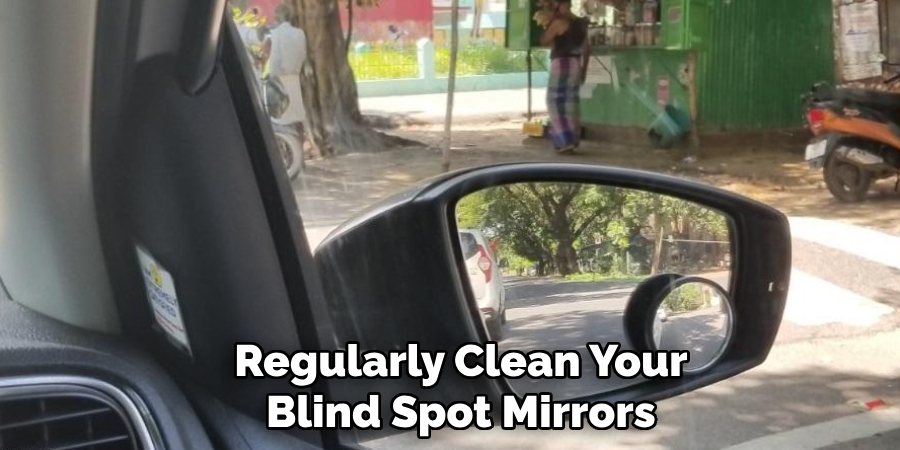
How to Angle a Blind Spot Mirror?
Adjusting your blind spot mirrors is simple and can significantly improve your driving experience. Here are some steps to follow for angling your blind spot mirrors:
- Start by sitting in the driver’s seat in your normal driving position.
- Adjust your side mirrors so you can see your vehicle’s edge in them.
- For convex or fisheye-style blind spot mirrors, tilt the mirror outward slightly from its default position.
- For flat or wide-angle blind spot mirrors, angle it outwards even more than the convex style.
- Check for any gaps between your side mirror and the edge of your vehicle; this could indicate an incorrect angle or adjustment.
Conclusion
How to use blind spot mirrors effectively requires proper installation and adjustment tailored to your vehicle and driving setup.
Always position the mirrors to minimize blind spots and enhance your visibility of the surrounding areas. Take the time to fine-tune the angles to see as much of the road and your vehicle’s sides as possible. Regular checks and adjustments are essential, especially after changing your seating or mirror positions.
With correct use, blind spot mirrors are a valuable tool for improving driving safety and awareness.

